All about superphosphates
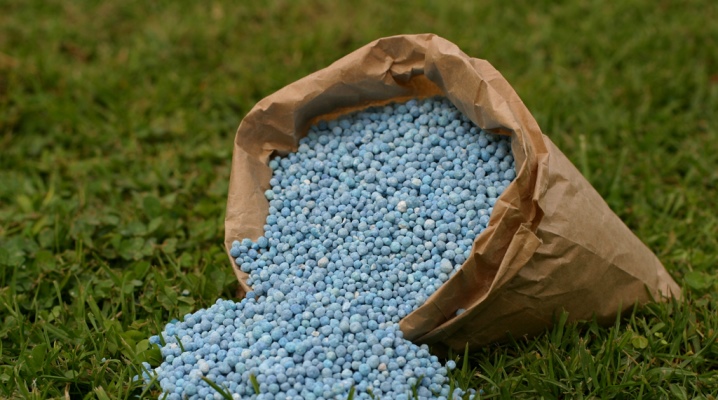
Many people have their own garden or vegetable garden, where they have to work hard. It is important to take care of the condition of the soil and the level of fertility. For this, gardeners resort to the introduction of various kinds of dressings, mineral and organic additives. Among such effective and useful tools, it is worth highlighting superphosphate. You should find out what varieties it is subdivided into.

What is Superphosphate?
Before proceeding to a detailed examination of all the features of superphosphate, you need to understand what it is. Superphosphate is one of the most common mineral phosphorus fertilizers. Phosphorus is present in this effective product in the form of monocalcium phosphate and free phosphoric acid. Superphosphate, which is used by modern summer residents, shows good efficiency. Its production is carried out using phosphates, which were obtained in natural or industrial conditions. Each type of superphosphate has its own formula.

Composition and properties
In the composition of superphosphate, phosphorus is contained in large quantities. Its volume directly depends on the specific direction of fertilization (in percentage - 20-50). In addition to phosphoric acid or monocalcium phosphate, the top dressing contains phosphorus oxide, which is distinguished by solubility in water. Due to the presence of the latter component, phosphorus is much more readily absorbed by plants as the plantings are watered. Based on the superphosphate subspecies, the following components can be observed in its composition:
- calcium sulfate;
- molybdenum;
- sulfur;
- boron;
- nitrogen.
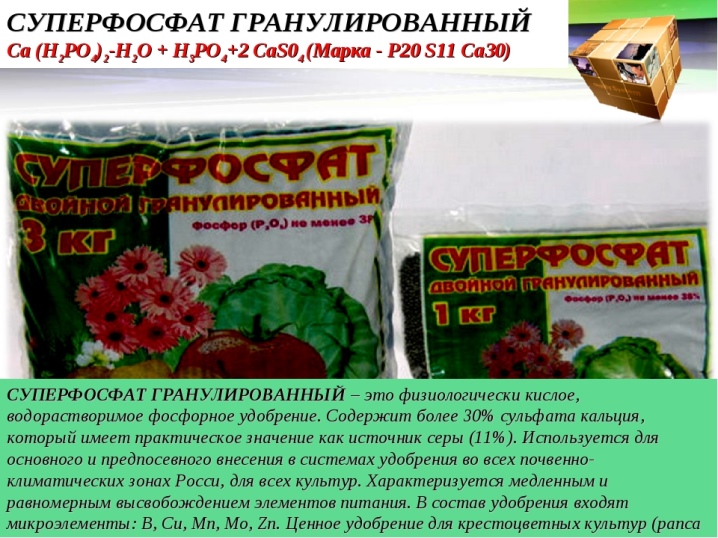
This type of fertilizer is very popular. Many gardeners and truck farmers decide to feed the plantings with it. Superphosphate has quite a few useful properties:
- such an effective feeding can improve metabolism;
- strengthens the root system of plants;
- prolongs flowering and fruiting of plants;
- positively affects the taste of fruits;
- increases the level of productivity in the vegetable garden or in the garden;
- using superphosphate, it will be possible to increase the protein content in the grain, as well as the oil in sunflower seeds;
- superphosphate cannot provoke constant acidification of the soil on the site.
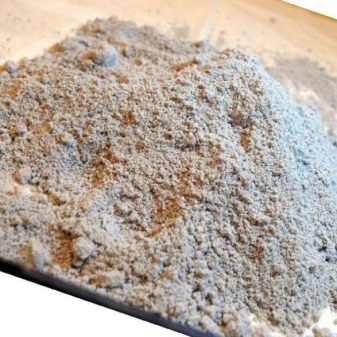
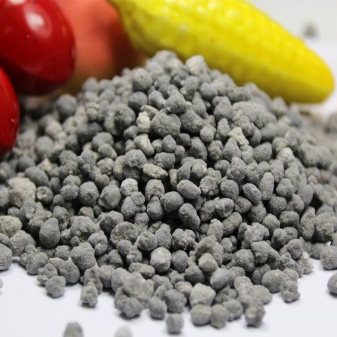
Applications
Absolutely any agricultural crop requires phosphorus. For example, from the vegetable family, the following popular crops, which are grown by many gardeners, are most in need of phosphorus:
- potato;
- cabbage;
- carrot;
- cucumbers;
- tomatoes;
- garlic;
- squash.
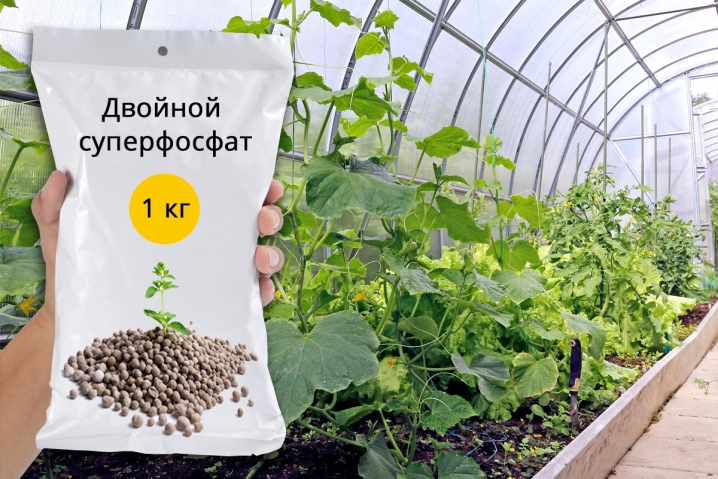
You can make this effective top dressing even if eggplant grows on the site. Phosphorus influences the vegetative process of various shrubs and trees, which produce juicy and sweet fruits. Superphosphate is suitable for these crops:
- grape;
- Apple tree;
- Strawberry;
- raspberries;
- pear.
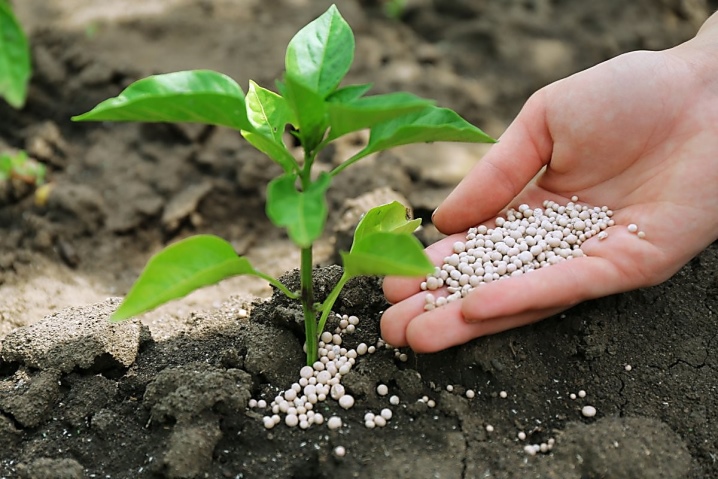
Gooseberries and currants give more acidic berries, therefore, in the case of their cultivation, phosphorus fertilizing should be applied much less often and more accurately. Insensitive crops react weakly to phosphorus fertilizing, for example, parsley, or pepper... And also have a low level of sensitivity. radish, lettuce, onion, beets.
Superphosphate is often used when planting flowers. Thanks to the introduction of such an additive, plants develop a stronger and healthier root system, and the flowering period is extended. For example, good results can be observed if the composition in question is used in relation to panicle hydrangea. If we talk about this beautiful plant, then it is worth noting that superphosphate is considered to be the best feeding for it.

It is allowed to use superphosphate for indoor plants. This is especially true of beautiful flowering varieties.
If phosphorus is not enough for these green pets, then their flowering will certainly become more scarce and less bright. At the same time, the plant itself looks unhealthy and grows extremely slowly in growth.
Varieties
Superphosphate is a fertilizer divided into several subspecies. Each of them has its own composition and properties. Let's take a closer look at how different types of this popular and highly effective fertilizer differ.
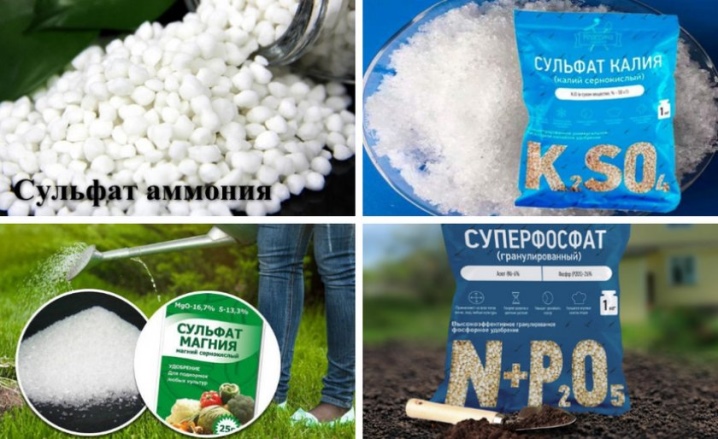
Simple
The tool is presented in the form of a gray powder. Many gardeners prefer to use extremely simple feeding. The fact is that this type of superphosphate contains the smallest content of additional chemicals. Simple superphosphate contains:
- phosphorus - it accounts for up to 20% of the composition;
- nitrogen - 8%;
- sulfur - rarely exceeds 10% of the total composition of the top dressing;
- magnesium - only 0.5%;
- calcium - from 8 to 12%.
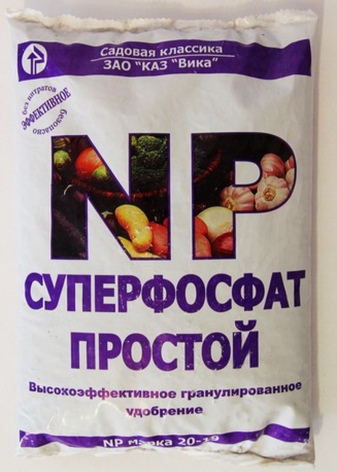
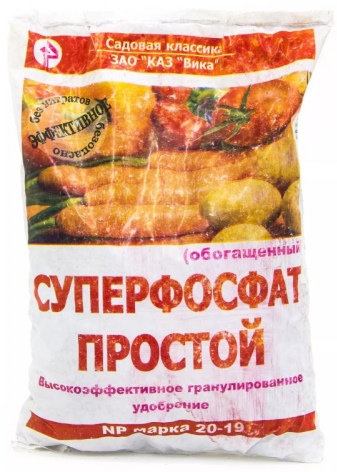
Plaster most often acts as a filler (up to 45%). The top dressing itself is made from apatite concentrate, phosphoric acid and ammonia. Before using simple superphosphate, you should familiarize yourself with all its disadvantages:
- in a humid environment, a powdery type substance usually cakes and collects in lumps - this is one of the most common problems noticed by gardeners and gardeners;
- in an acidic environment, simple superphosphate is poorly absorbed by common agricultural crops;
- the effectiveness of a simple composition proved to be not the highest.
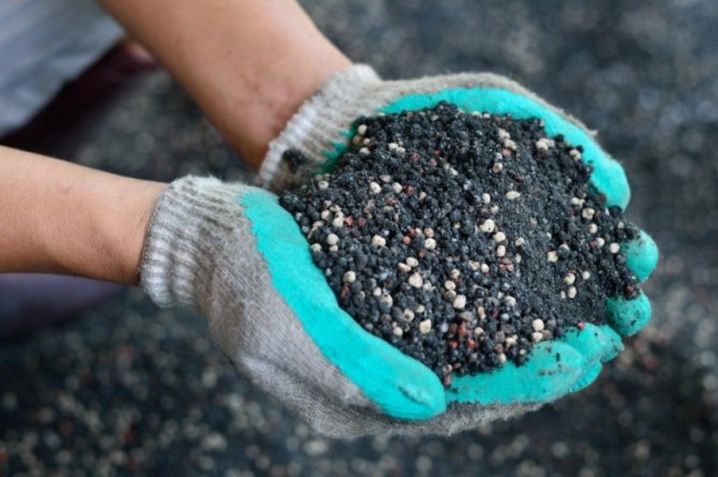
Double
Often, gardeners use double superphosphate, abandoning the simple option due to not the highest efficiency. The considered subspecies of feeding has 3 components in its composition, which are the main nutrients for plants:
- phosphorus - no more than 46%;
- nitrogen - 7.5%;
- sulfur - 6%.

Depending on the manufacturer, the percentage of nitrogen in different dual feed formulations may vary. Most often, the differences are in the range of 2-15%. Additional components are also observed in the double superphosphate. Most often, small portions contain:
- calcium;
- iron;
- aluminum;
- magnesium.
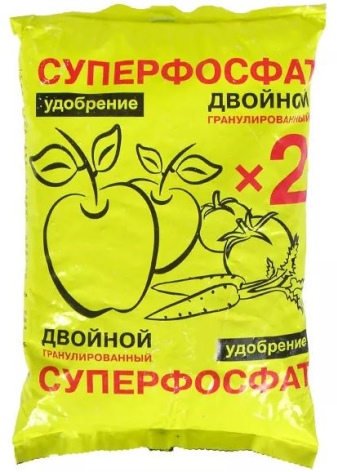
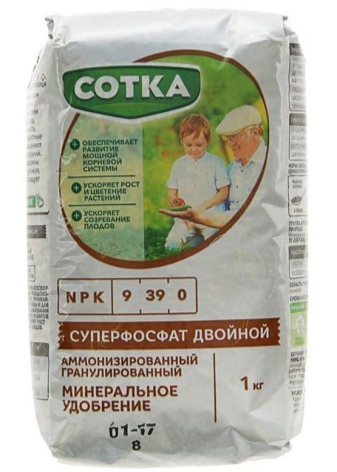
Double modern superphosphate differs from standard simple fertilizer in the following parameters:
- the composition of double superphosphate is characterized by a 2-fold increase in phosphorus content in an easily soluble form;
- there is no ballast in it (it means gypsum, which is present in a simple product);
- double superphosphate is more expensive than simple one.
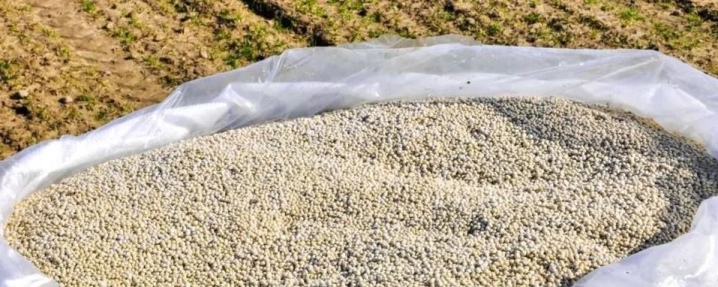
Particles of the drug quickly dissolve in the water mass and are easily assimilated.
Granulated
It is considered convenient to use superphosphate granular type... This fertilizer is obtained from a simple preparation in the form of a powder by rolling it into gray granules. Their diameter usually does not exceed 3-4 mm mark. Effective elements are observed in the composition of granular dressings:
- from 20 to 50% phosphorus;
- calcium;
- sulfur;
- magnesium.


Granular monophosphate is very popular among summer residents. Many people prefer to feed the plantings on the site with this particular fertilizer. During storage, the fertilizer particles do not stick to each other, and in a humid environment they do not undergo caking, they easily dissolve in water. However, one must take into account the fact that granular superphosphate is weakly fixed in the soil.
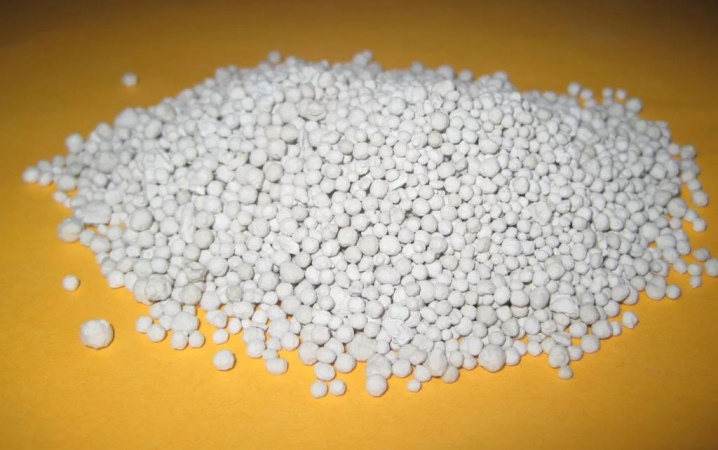
Superphosphate, sold in granules, is considered the most useful in the care of legumes, cereals and crucifers. Its high efficiency is due to the presence of an important component: sulfur.
Fertilizer especially easily and productively perceived by popular vegetables, potatoes and table root vegetables.
Ammoniated
Ammonized superphosphate demonstrates good efficiency. It is a special mineral fertilizer with a high content of both microelements and macroelements. Let's see their list:
- sulfur - no more than 12% in the composition;
- gypsum - up to 55%;
- phosphorus - up to 32%;
- nitrogen;
- calcium;
- potassium.
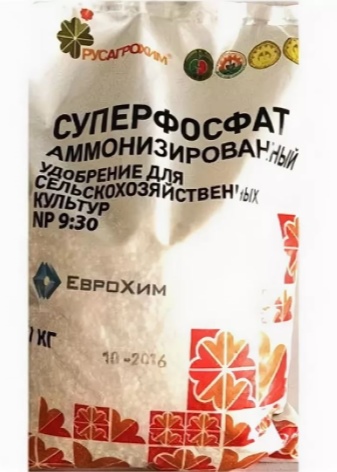
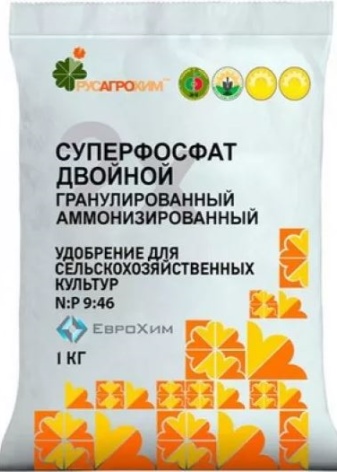
Ammonized superphosphate contains ammonia... This component increases the efficiency of fertilization without acidifying the soil in the garden or vegetable garden. Fertilizer is more suitable for plants that need more sulfur. These can be crops of the oilseed and cruciferous families, namely:
- radish;
- cabbage;
- sunflower;
- radish.

Instructions for use
Superphosphate is an effective fertilizer, but it must be applied correctly to achieve the desired results. You should clearly adhere to a simple instruction, without neglecting any of the steps. Only then can you expect good results.
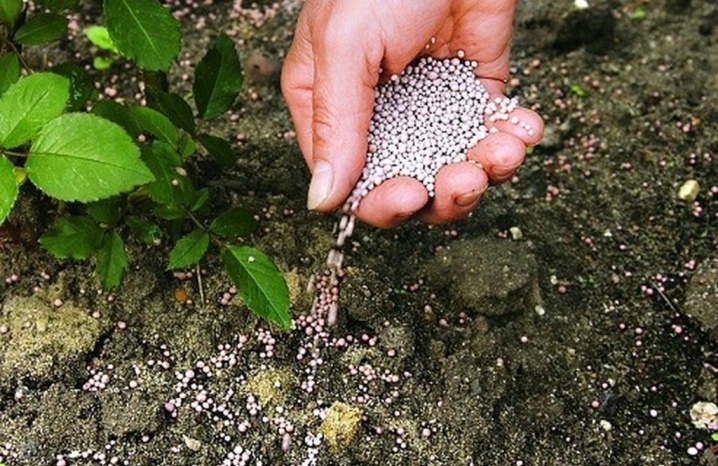
Dosage
It is very important to maintain a safe dosage of fertilizers. Let's consider in what doses it is required to add superphosphates of various types.
- If you use simple superphosphate, for example, when planting peppers, tomatoes or cucumbers, then it is important not to overdo it with its introduction into the hole. You can place a pellet feed in the hole (half a teaspoon, about 3-4 grams per plant).
- For the effective action of double superphosphate, granular particles are taken in a dosage of 100 g per 1 m 2 of earth. You can prepare a double superphosphate extract. To do this, use the last component in a dosage of 3 tsp. for 500 ml of boiling water.
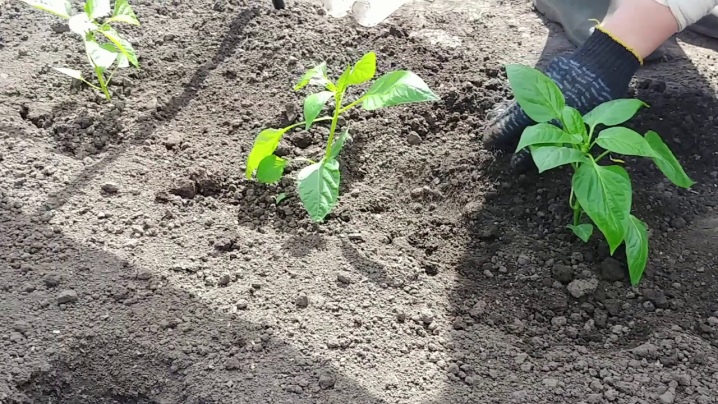
Usually, the packaging indicates all the nuances and dosage of feeding. You should not experiment with the recipe, because if you choose the wrong dose of the components, you can get the opposite effect, and the plants will grow worse, since their health will suffer.
Preparation of the solution
Many gardeners are afraid to prepare a superphosphate solution on their own and dilute it in water, since mistakes are unacceptable. It may seem that it is unrealistic to dissolve such a feeding in water. Most often, this impression is created due to the presence of gypsum (ballast) in the composition. In fact, the dissolution of superphosphate in water is possible, but it is unlikely to be done quickly. It usually takes at least a day to prepare the solution.
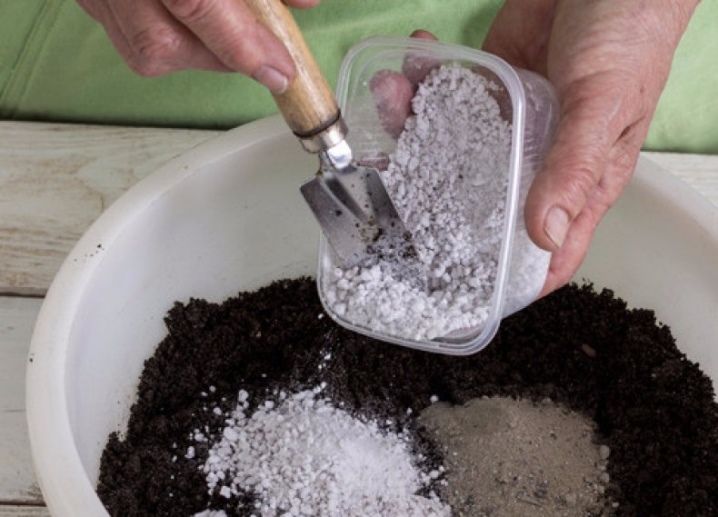
Branded packaging always indicates that the phosphate must be dissolved in a liquid. However, detailed step-by-step instructions are extremely rare.
Sometimes gardeners panic because they notice that the product cannot dissolve in the water. In fact, only gypsum does not dissolve.
It can take a long time to extract useful elements and required chemical compounds from porous gypsum granules. Liquid feeding is done for a couple of days. The knowledge of physics can come to the rescue of the gardener. The higher the temperature of the water, the faster the molecules move in it and diffusion takes place, and the necessary substances are washed out of the granules. Consider one of the recipes for quickly dissolving superphosphate with boiling water.
- Take 2 kg of top dressing granules, pour 4 liters of boiling water over them.
- Cool the mixture while stirring gently. Then drain the resulting solution.
- Refill the phosphate granules with 4 liters of boiling water and let it brew overnight.
- In the morning, you need to drain the liquid from the granular fertilizer, then combine it with the first composition, and bring the volume of liquid to 10 liters.

The resulting amount of fertilizer will be enough to process 2 acres of potatoes.If you want to insist fertilizer in cold water, then you should not expect a quick result. Liquid top dressing will be prepared much faster if you use not granular, but powder monophosphate. But a solution of this type must be filtered as thoroughly and carefully as possible, since during the spraying of the top dressing, the nozzle can become clogged.
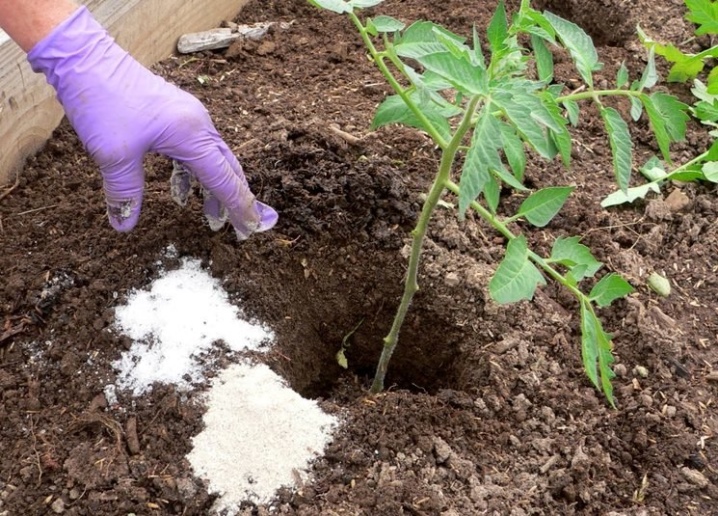
Fertilization
Superphosphate is introduced into the ground at different times.
- Normally, simple superphosphate is added as the main fertilizer either in spring (April) or in autumn (September). This is done by digging up the earth in the beds.
- Double phosphate should be added at the same time as in the case of a simple formulation. It is also added during digging in the spring or fall seasons.
- Sometimes phosphorus fertilizers are allowed to be applied in summer, depending on the type of soil and plant characteristics.
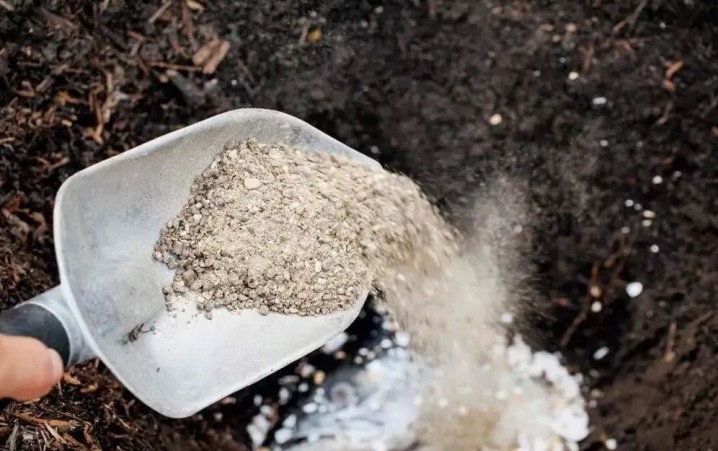
Alternative remedies
Superphosphate is effective, but some gardeners want to replace it with another effective remedy that brings equally good results. Of course, there is no 100% replacement for this fertilizer, but other formulations can be used. So, many people who prefer to engage in agriculture use folk remedies as an alternative. For example, it could be fish bone meal... Based on the specific technology of its manufacture, the nitrogen content in such a preparation can be 3-5%, and phosphorus - 15-35%.
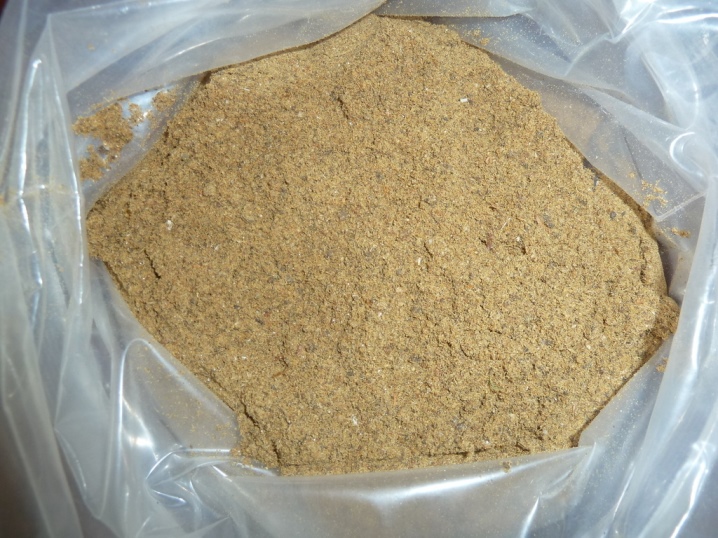
You can resort to combining superphosphate with other types of dressings. For example, it can be lime, urea, limestone flour, sodium, ammonium or calcium nitrate.
Storage and precautions
The fertilizers in question must not only be properly prepared and applied to the soil, but also correctly stored.
- These must be places that are inaccessible to children and pets.
- Do not leave superphosphates in the immediate vicinity of food, feed and medicine.
- For storing feedings, it is better to choose dry places, protected from sunlight.
- Certain precautions must be taken when working with superphosphates. It is required to wear rubber gloves on your hands. Upon completion of all procedures and work, you must wash your face and hands with soap and water.
Consider what to do if you need first aid after working with fertilizers:
- if superphosphates come into contact with the skin, they must be thoroughly washed off with soap and water;
- if the composition accidentally gets into the eyes, they will need to be rinsed with plenty of water as soon as possible;
- in case of poisoning, rinse your throat, drink a few glasses of water to induce vomiting, consult a doctor.
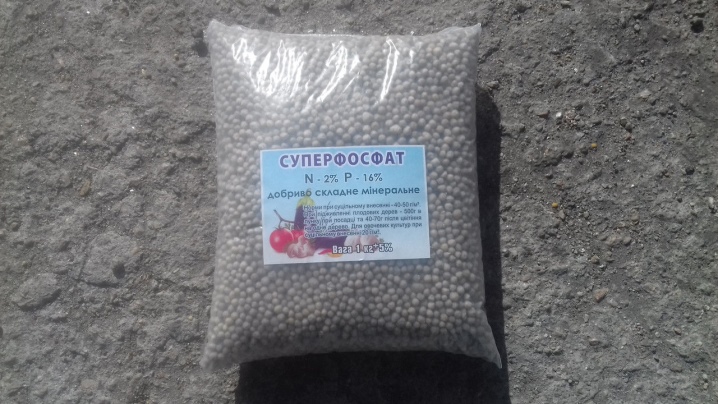
Expert advice
If you, like many gardeners and gardeners, decide to use superphosphates, then you should arm yourself with some valuable tips and tricks from specialists.
- Specialists it is not recommended to add superphosphate to the soil at the same time as urea, lime, dolomite flour and ammonium nitrate. Upon completion of the use of other types of dressings, it is allowed to fertilize crops with superphosphates no earlier than 1 week later.
- It must be remembered that phosphorus is poorly absorbed at low temperatures. For this reason, it is most often early-planted seedlings that can seriously suffer from a lack of an element.
- Many experienced gardeners recommend mixing superphosphate into the ground in the fall. In the above situation, top dressing will be in the ground for a long time, feeding it with the necessary useful elements. This method of fertilization is especially relevant when it comes to acidic and alkaline soil. It is also allowed to feed acidic soil in the fall, if liming is not planned.
- Do not expect superphosphate granules to quickly dissolve in water. If you need to prepare top dressing very quickly, then it is better to give preference to powder products.Preparation of granular preparations is required in advance.
- Recommended store the considered type of dressing in a room where the humidity level remains above 50%. In this case, the drug will not cake.
- If you want to combine superphosphate with other effective drugs, please note that it goes well with organics.
- Is always read the instructions and recommendations, present on the packages with top dressing. Try not to be zealous when applying fertilizers, so as not to ruin the plantings.
- If you want to feed cucumbers with superphosphates, it is recommended before that. water well.
- Superphosphate in powder form in combination with ammonium sulfate hardens. Add the crushed mixture to the ground.
- If you decide to buy high-quality superphosphate, you should go to purchase it. to a specialized store, where everything for the garden and vegetable garden is sold. Typically, such outlets sell branded formulations of good quality.
- The largest dose of superphosphate is allowed to be applied at the time of flowering and fruiting.
- If it's a dry summer, then with a lack of moisture, the need for phosphorus increases markedly. The gardener must take this into account.
- Superphosphates can be dissolved in water, but in this case a precipitate forms. To achieve the maximum uniform composition, you need to make a special hood.
- You can add high-quality phosphorus fertilizer no earlier than a month after deoxidizing the soil on the site.
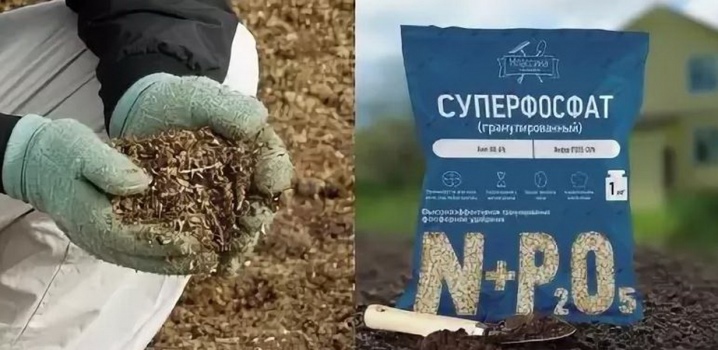
For information on how to use superphosphate correctly, see the next video.













The comment was sent successfully.